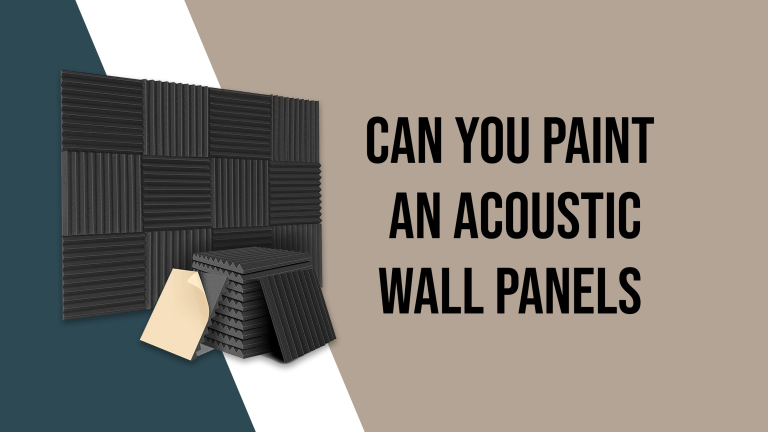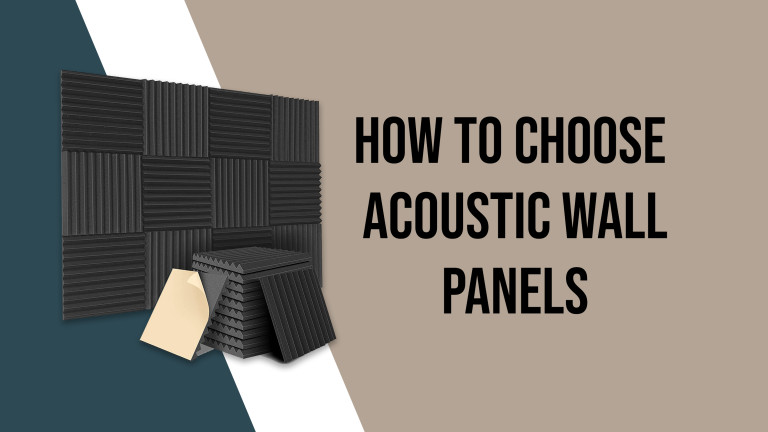How To Make Hexagonal Acoustic Panels?
Hexagon acoustic panels are sound-absorbing materials that are used to reduce the amount of echo and background noise in a space.
They are often placed on walls or ceilings to help improve the acoustics of a room, making it more comfortable to listen to music or have conversations.
Acoustic panels can come in many shapes and sizes, including hexagons.
Here’s the benefits of acoustic panels.
Hexagonal acoustic panels can be an attractive and effective way to improve the acoustics in a space, as the geometric shape can help to break up and diffuse sound waves, reducing their intensity and improving the overall sound quality of the room.
I have made an acoustic panel.
Why We Use Acoustic Panels Hexagon?
There are several reasons why people might choose to use hexagonal acoustic panels.
One of the main reasons is that hexagons can be an attractive and visually appealing option for acoustic panels. Because of their geometric shape, hexagonal panels can help to break up the monotony of rectangular panels and add some visual interest to a space.
Additionally, the shape of hexagons can help to diffuse sound waves more effectively than rectangular panels, which can improve the overall sound quality of a room. This is because hexagons have more corners and edges, which can help to scatter and dissipate sound waves more evenly throughout the space.
Best Hexagon Acoustic Panels Design – Which One To Choose?
There are many different designs that can be used for hexagonal acoustic panels. Some common options include:
- Solid hexagonal panels that are made from a single piece of sound-absorbing material, such as foam or fabric. These panels can be hung on walls or ceilings, and can be painted or covered with a decorative fabric to match the aesthetic of the space.
- Hexagonal panels that are made from a frame or structure, with sound-absorbing material attached to the inside. These panels can be hung on walls or ceilings, and the frame can be made from a variety of materials, such as wood or metal.
- Hexagonal panels that are integrated into a larger acoustic panel system. These panels can be part of a modular system that allows for flexibility and customization, and can be arranged in different configurations to suit the needs of the space.
Overall, the design of hexagonal acoustic panels can vary depending on the specific needs and preferences of the user.
Acoustic Panels Hexagon Sound Proof Padding
Acoustic panels are not typically used as a means of soundproofing a space. While they can help to reduce the amount of echo and background noise in a room, soundproofing hexagons will not block sound completely.
Instead, they work by absorbing sound waves, which reduces their intensity and improves the overall sound quality of the space.
Types of Acoustic Panels Hexagon
There are several different types of acoustic panels that come in a hexagonal shape. Some common options include:
Foam Panels:
These panels are made from a piece of sound-absorbing foam, which is usually covered with a fabric or vinyl wrap. Foam panels can be effective at reducing echo and background noise, but they are not as durable as other options.
Fabric-Wrapped Panels:
These panels are made from a piece of sound-absorbing material, such as fiberglass or mineral wool, which is wrapped in a layer of fabric. Fabric-wrapped panels can be more durable and long-lasting than foam panels, and they can also come in a wider range of colors and textures.
Wood Panels:
These panels are made from a frame or structure of wood, with sound-absorbing material attached to the inside. Wood panels can be more durable and long-lasting than foam or fabric-wrapped panels, and they can also be more visually appealing.
Overall, the type of acoustic panel that is best for a given space will depend on the specific needs and preferences of the user.
How To Make Hexagonal Acoustic Panels?
To make hexagonal acoustic panels, you will need the following materials:
Sound-Absorbing Material:
This can be foam, fiberglass, mineral wool, or any other material that is effective at absorbing sound. The amount of material you will need will depend on the size and number of panels you are making.
Fabric or Vinyl Wrap:
Soundproof hexagons will be used to cover the sound-absorbing material and give the panels a finished look. You can use a single color or pattern, or mix and match different fabrics to create a unique hexagon sound panels design.
Wood or Metal Frame:
This will be used to create the structure of the hexagonal panels. You can use a variety of different woods or metals, depending on the look and feel you are trying to achieve.
Screws or Nails:
These will be used to attach the sound-absorbing material to the frame.
To make the panels, follow these steps:
- Cut the sound-absorbing material to the desired size and shape for the hexagonal panels.
- Cut the fabric or vinyl wrap to the same size and shape as the sound-absorbing material.
- Cut the wood or metal frame to the desired size and shape for the hexagonal panels.
- Assemble the frame by screwing or nailing the pieces together.
- Attach the sound-absorbing material to the frame, using screws or nails.
- Cover the sound-absorbing material with the fabric or vinyl wrap, using a staple gun or other adhesive.
- Repeat the process to make additional panels, if desired.
Once the panels are complete, they can be hung on walls or ceilings using screws, nails, or other types of hardware.

Hexagon Acoustic Panels Installation Process
The installation process for hexagonal acoustic panels will depend on the specific type and design of the panels, as well as the location and intended use. In general, the installation process will involve the following steps:
- Measure the space where the panels will be installed to determine the size and number of panels needed.
- Select the appropriate mounting hardware, such as screws, nails, or adhesive, based on the type and design of the panels and the location of the installation.
- Determine the best location for the panels, taking into account factors such as the direction and intensity of the sound waves, the shape and size of the room, and the aesthetic preferences of the user.
- Install the panels on the wall or ceiling using the selected mounting hardware.
- Adjust the panels as necessary to achieve the desired sound quality and visual appearance.
It is important to follow the manufacturer’s instructions and recommendations when installing hexagonal acoustic panels, as improper installation can affect the performance and durability of the panels. In some cases, it may be necessary to hire a professional to install the panels to ensure they are installed correctly.








